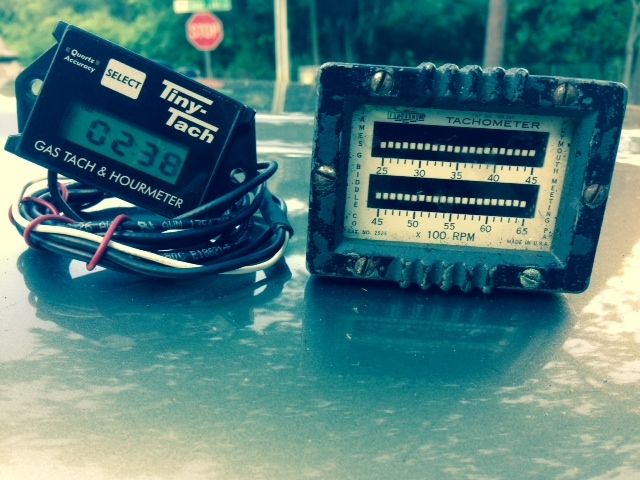I have used three different tachs for checking RPM on the water at speed.
The MacTools Smart tach is a good idea. The antenna reads the sparks right out of the air. Just lay the antenna next to the hood and read rpm. No tools, no hookup, no nothing. The device just needs to be set for cylinders and cycles. Nice idea, poorly built, looses sensitivity, and eventually stops working. Not designed for bouncing around the floor of an alum boat. Antenna is fragile. Unit is expensive to refurb once out of warranty, and takes a long time.
The MacTools timing light with a tach function is another good idea but, the high voltages and solid copper ignition wires on outboards zap the poor thing into total confusion. After I did this a couple of times I read the directions. Operator is supposed to substitute a resistor core plug wire when using this tool on outboards. So much for that.
The TinyTach is the unit that seems to have the best track record so far. I find it a little inconvenient to have to find a ground bolt as this requires a tool to be present for hook-up. The other wire wraps twice around the plug wire. Make sure to keep the wire far as possible from the other cylinders coils/wires. You'll read double/triple rpm. Wrap no more than twice or the induced voltage will knock out the instrument. You will have to call their tech department to find out how to re-activate the unit.
Old Evinrude dealers had a neat tach that worked off vibrations. It had little fingers that would vibrate at different frequencies. The fingers were marked for the RPM at which they would vibrate. The mechanic would just hold the unit firmly against the engine and read the speed from which ever finger was vibrating. Old timer showed me this one day many years ago and it stuck with me.
All things considered, I recommend the Tiny Tach for checking rpms on tiller boats at speed. Once hooked up correctly they require the least attention to get a reading...and they are the least expensive way to go. Buy a genuine TinyTach as I would imagine there are knock-offs. Buy the cheap version, the options turned out to be useless to me. Buy the one with the long wire in case you want to use it from a console. Specify the marine unit.
Hope this helps.


